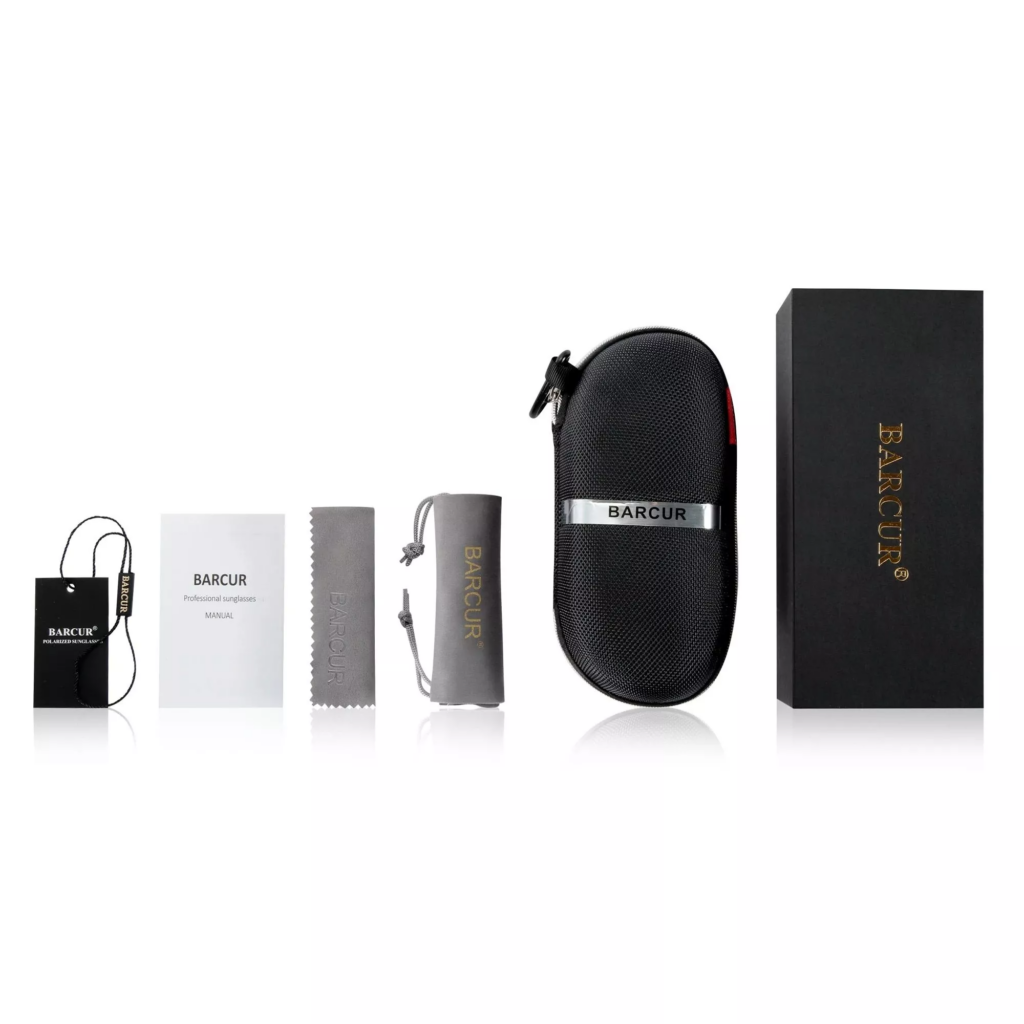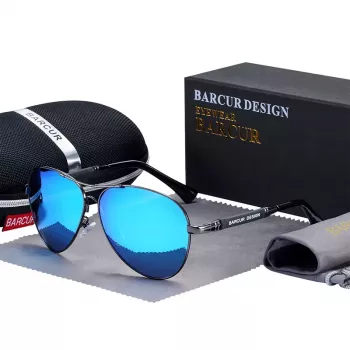sunglasses

Consider that the first pair of sunglasses, designed to combat glare, was invented as early as the 12th century in China. Back then, they were made from smoky quartz, not quite the polarizing lenses we’re familiar with today. This fascinating evolution underscores the critical role sunglasses play in safeguarding our eyes from harmful UV rays.

Sunglasses have amassed a rich history, from their rudimentary beginnings to becoming a $4 billion industry. Originally a practical invention for reducing glare in Arctic climates, their design has constantly evolved to meet fashion trends and enhance technological advancements. Notably, by blocking nearly 99% of UVA and UVB rays, modern sunglasses not only define style but offer essential protection against eye diseases.
Sunglasses, essential for eye protection, block harmful UV rays and reduce glare, enhancing visual clarity. They vary in style from aviators and wayfarers to sport-specific designs, each suited for different activities. Advances include smart features and eco-friendly materials, making them both a functional and fashionable accessory.
Evolution of Sunglasses
The journey of sunglasses began centuries ago. In the 12th century, ancient Chinese judges used flat panes of smoky quartz to block light. These early versions were more about disguise than protection or fashion. Fast forward to the 18th century, tinted lenses started gaining popularity. It was an era of experimentation and discovery in eyewear technology.
Sunglasses truly transformed in the 1930s with the invention of polarized lenses. Edwin H. Land, a brilliant scientist, developed these lenses, drastically improving glare reduction. This innovation was a game-changer, especially for pilots in World War II. It paved the way for sunglasses as both stylish and functional tools. They soon became a staple for outdoor enthusiasts everywhere.
As time progressed, sunglasses became iconic fashion statements. The 1950s marked a golden age for sunglasses in Hollywood. Celebrities and movie stars, like Marilyn Monroe, wore them, boosting their popularity. Designers began experimenting with styles, shapes, and colors. This trend continues to influence modern fashion today.
Now, sunglasses are more advanced, with UV protection and photochromatic lenses. Many sunglasses today can change lens tint based on the sunlight level. With technology advancing, who knows what future sunglasses will look like? Innovations may keep enhancing comfort and protection. Sunglasses have come a long way, evolving while maintaining their original purpose.
Origins of Sunglasses in Ancient Times

The beginnings of sunglasses trace back to ancient China. Chinese judges in the 12th century used smoky quartz lenses to conceal their emotions. These early versions didn’t offer UV protection. They served the purpose of hiding eye expressions during trials. This fascinating use shows how creative early societies were.
In the Arctic, the Inuit people crafted snow goggles to protect their eyes. Made from bones or wood, these goggles had narrow slits. This design reduced the intensity of sunlight reflecting off the snow. Although not typical sunglasses, they highlight the human instinct to shield eyes. This ingenuity points to the necessity of eye protection in harsh environments.
Moving on to Rome in the 1st century, Emperor Nero was famous for watching gladiator games through polished emeralds. These stones acted as early lenses to reduce glare and improve visibility. However, they were fragile and expensive. Only the wealthy could afford such luxury. This shows how social status was linked to eye protection tools.
As centuries passed, the idea of using tinted lenses began to spread. Different cultures found unique ways to adapt eyewear for specific needs. Whether it was to reduce glare or mask emotions, these early inventions paved the way for modern sunglasses. The progress from ancient times has been significant and continues to evolve today.
Importance of Sunglasses for Eye Protection
Sunglasses play a critical role in safeguarding our eyes from harmful ultraviolet (UV) rays. Extended exposure to UV rays can cause serious eye problems such as cataracts and macular degeneration. Sunglasses with UV protection can block nearly 99% of these harmful rays. This helps maintain long-term eye health and comfort. Choosing the right pair of sunglasses is essential for effective protection.
Besides UV protection, sunglasses also reduce glare from surfaces like water, roads, and snow. Glare can impair vision and lead to discomfort or accidents. Polarized lenses in sunglasses are designed specifically to minimize glare. This feature is particularly beneficial for outdoor activities, enhancing visual clarity and safety. It makes sunglasses a necessary accessory for many.
Frequent use of sunglasses also promotes eye comfort in bright environments. Bright sunlight can strain our eyes and cause headaches or squinting. By wearing sunglasses, the eyes relax, preventing strain. This makes day-to-day tasks and outdoor fun more enjoyable. Sunglasses improve both comfort and performance.
For children, wearing sunglasses is equally important. Their eyes are more sensitive to UV damage, making early protection crucial. Encouraging kids to wear sunglasses establishes healthy habits. This proactive approach supports their vision over the years. Sunglasses are essential for both eye protection and everyday safety.
Types of Sunglasses and Their Features

Sunglasses come in a range of styles, each offering unique features. Aviator sunglasses are known for their thin metal frames and teardrop lenses. These were originally designed for pilots to provide wide coverage and reduce glare. Today, they remain a classic choice for both men and women. Their iconic style never goes out of fashion.
Wayfarer sunglasses have a distinct, trapezoidal frame and thick rims. Made famous by Hollywood stars, they provide a stylish look suitable for any face shape. Ray-Ban popularized this design in the 1950s. They have since become a symbol of timeless cool. Wayfarers are often made from plastic, making them lightweight and comfortable.
Sports sunglasses are designed for active lifestyles. With wraparound frames, they offer better coverage and protection from wind and debris. These sunglasses often feature shatterproof and impact-resistant lenses. They are ideal for activities like cycling, running, and skiing. Athletes rely on them for their durability and security.
The lenses of most sunglasses can come with added features such as polarization, UV protection, and mirrored finishes. Polarized lenses are excellent for reducing glare, especially useful for drivers and fishermen. Mirrored lenses add a reflective coating that reduces light, making them suitable for very bright conditions. Many sunglasses also offer UV filters to protect eyes from harmful rays. These features enhance the functionality and appeal of sunglasses.
Prescription sunglasses combine vision correction with sun protection. They are perfect for those who need glasses for vision but want to avoid the hassle of swapping between spectacles and shades. Available in a variety of styles, they offer the same lens features as regular sunglasses. This makes them a versatile and practical option. With prescription sunglasses, you get the best of both worlds.
Impact of Sunglasses on Fashion Trends
Sunglasses have long been a symbol of style and sophistication. From Hollywood movies to music videos, they’ve been used to create distinct looks and convey coolness. Celebrities like Elvis Presley and Audrey Hepburn popularized specific styles, turning them into fashion staples. Designers continually reinvent classic designs, keeping sunglasses at the forefront of fashion. This has enabled sunglasses to transcend their functional purpose.
Different styles of sunglasses often reflect cultural shifts and eras. In the 1960s, oversized sunglasses became all the rage, symbolizing glamour and mystery. The 1970s introduced colorful, bold designs that matched the period’s vibrant vibe. Each decade brought its own twist, making sunglasses a reflection of society’s changing tastes. For fashion enthusiasts, sunglasses provide a glimpse into history and trends.
Luxury brands have played a major role in elevating sunglasses in the fashion world. High-end designers like Gucci, Prada, and Versace offer unique, high-quality designs. These luxury shades are more than just accessories; they are status symbols. For many, owning a pair of designer sunglasses is a mark of prestige. This trend highlights the sunglasses’ evolution from necessity to luxury.
Streetwear culture has embraced sunglasses as essential accessories. Brands like Oakley and Ray-Ban have collaborated with streetwear labels to create limited-edition designs. These collaborations blend high fashion with casual style, appealing to a younger audience. The influence of streetwear is noticeable in shapes and colors. Sunglasses continue to adapt, staying relevant in diverse fashion cultures.
With the rise of sustainable fashion, eco-friendly sunglasses have gained traction. Brands are increasingly using recycled materials and sustainable practices. This appeals to environmentally conscious consumers who want style without harming the planet. The push for sustainability is changing how sunglasses are made and marketed. It’s a trend that promises to define future fashion landscapes.
Future Trends and Technological Advances in Sunglasses
Sunglasses are on the brink of exciting technological transformations. Smart sunglasses are emerging, integrating technology like built-in speakers and touch controls. These features allow users to connect with their phones for music and calls. It’s like having your wireless headphones and stylish shades in one device. This trend is making sunglasses more interactive.
Augmented Reality (AR) is making its way into eyewear, impacting the sunglasses industry too. AR sunglasses can overlay digital content onto the real world, offering experiences like navigation assistance and gaming. Tech companies are investing in developing lightweight AR sunglasses. This creates a bridge between reality and technology for consumers. It’s a step toward futuristic eyewear experiences.
Another forward-thinking development is enhanced lenses with customizable tint levels. These photochromic lenses automatically adjust to the level of sunlight. This feature optimizes comfort and vision in varying light conditions. Users can enjoy clear vision without switching glasses. Future sunglasses will likely offer enhanced adaptability and performance.
Environmental consciousness is also shaping the future of sunglasses. Brands are focusing on using eco-friendly materials like biodegradable frames and recycled lenses. This shift reduces environmental impact while meeting consumer demands. It reflects the growing trend of sustainability in fashion. Eco-friendly sunglasses are likely to increase in popularity.
The integration of AI in sunglasses is another promising advancement. AI can enable voice-activated commands and smart lens adjustments. Imagine lenses that could automatically focus or provide real-time language translation. Such innovations could redefine how we use sunglasses daily. The possibilities are vast and exciting.
Frequently Asked Questions
Sunglasses offer more than just a stylish accessory; they play a vital role in protecting our eyes. Below are some frequently asked questions that explore various aspects of sunglasses, from protection to style and technology.
1. What types of UV protection do sunglasses offer?
Sunglasses are designed to block harmful ultraviolet (UV) rays from the sun, particularly UVA and UVB rays. UV protection can vary depending on the lens material and coatings. Most high-quality sunglasses will specify their UV protection level, often promising to block 99% or 100% of UV rays. It’s essential to check this feature when purchasing to ensure your eyes are adequately protected.
Some sunglasses also offer additional protection features such as anti-reflective coatings or polarized lenses, which reduce glare. Polarized lenses are especially beneficial for activities like driving or fishing, where glare can impair vision. These advancements in lens technology enhance both safety and comfort under bright sunlight. By choosing sunglasses with comprehensive UV protection, users can shield their eyes from long-term damage.
2. Can sunglasses be used for night driving?
While it might seem like a good idea to wear sunglasses at night to reduce glare from headlights, it’s not recommended. Sunglasses, even if designed for low light conditions, dim your vision, which can be dangerous when driving at night. Instead, consider using specially designed night-driving glasses that enhance vision and minimize glare without affecting overall visibility.
These specialized glasses usually come with anti-reflective coatings to deal with light reflections from cars and streetlights. They offer added clarity without the darkening effect of sunglasses. It’s crucial for night drivers to choose eyewear that enhances safety rather than decreases visibility. Using the right optical tools can make night driving safer and more comfortable.
3. How do polarized lenses work?
Polarized lenses contain a special filter that blocks intense reflected light, reducing glare. When light reflects off flat surfaces like water, roads, or glass, it becomes polarized, meaning it travels in a more uniform direction. Polarized lenses reduce this glare by neutralizing the reflected rays passing through the lenses. This results in increased comfort and better visual clarity.
This technology is particularly beneficial for outdoor activities such as fishing, boating, and skiing, where glare can be a significant safety issue. By minimizing glare, polarized lenses improve vision clarity, allowing you to see more details without strain. They offer a distinct advantage for enhancing visual performance in bright, reflective environments.
4. Are expensive sunglasses better than cheap ones?
While price can reflect quality, it’s not always the definitive indicator of better protection or performance. Expensive sunglasses generally offer superior lens quality, stylish designs, and durable frames. However, many affordable sunglasses provide adequate UV protection, proving there’s no strict need to overspend for eye safety.
When choosing sunglasses, prioritize features like UVA/UVB protection and lens material over brand names or cost. Many budget-friendly options still include key protective features, ensuring your eyes are safe from the sun. Always check the label for UV protection details, regardless of price, to ensure you’re making a sound purchase.
5. How should sunglasses be maintained?
Proper maintenance can extend the lifespan of your sunglasses and keep the lenses clear. Keep them in a protective case when not in use to prevent scratches and damage. Clean lenses regularly with a microfiber cloth and lens cleaner, avoiding harsh chemicals that may damage the coating.
Avoid placing sunglasses face down on surfaces, and resist using clothing to wipe lenses as it can cause scratches. If your sunglasses have screws, check them occasionally for tightness. Regular care and storage will help preserve the lenses and ensure optimal performance over time. Consistent maintenance is key to long-lasting eyewear.
Conclusion
Sunglasses have evolved significantly, intertwining style with function to become essential eye protectors in our everyday lives. From classic aviators to advanced polarized lenses, their development showcases technological advancements and shifts in fashion trends. As we look to the future, innovations promise even greater enhancements in both function and sustainability. This progress reflects a growing understanding of the vital role sunglasses play in protecting our vision.
The integration of smart features and eco-friendly materials into sunglasses design is an exciting frontier, pointing toward sunglasses that are not only stylish but also environmentally conscious and technologically advanced. By understanding the benefits and advancements of sunglasses, experts can better guide their use and development moving forward. Sunglasses offer a unique blend of health benefits and fashion appeal, securing their place as a staple in modern wardrobe and lifestyle.

















Leave a comment